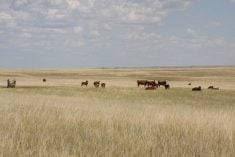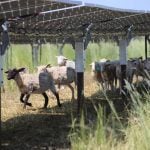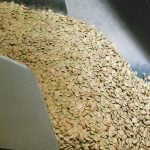Crop markets are waking up to weather problems that may hurt crops in Russia and China.But it will be mid-July before farmers know whether these La Nina provoked problems will become big enough to give a solid footing for higher prices.”Right now, I think it’s a speculative thing,” said Drew Lerner, president of World Weather Inc. in Chicago.”Everyone knows that there’s developing dryness in China and that there’s a relationship between dryness and La Nina. We don’t have a problem of big proportions today, but we might in a couple of weeks.”La Nina is a weather phenomenon caused by a variation in ocean water temperatures in the equatorial eastern Pacific Ocean. It causes dryness in northeastern China, south-central Russia and former Soviet states and the U.S. Midwest.La Nina has not officially developed yet, but most weather analysts believe a moderately strong one is about to appear.China’s Yellow River basin is dry, but most crops there are irrigated. Lerner said the Yellow River basin situation is worth watching because dryness from there often migrates to the north during a strong La Nina. Northern China is a major producer of corn and soybeans and there is less irrigation there.Dryness in Russia’s New Lands region is a bigger concern. The New Lands region refers to central Russia in the part of Siberia north of Kazakhstan, a wheat growing region.”That area will become a problem a lot faster than northeast China,” said Lerner.Dryness is not a problem in most of the U.S. Midwest and current wet conditions in many areas mean La Nina has limited potential to damage crops there, Lerner said.”It’s plenty moist. The forecast is for drier but we can go 10 days to two weeks without having any meaningful rain and still have a good crop.””There’s a lot of guys out there (in the market) pushing really hard for a problem in the U.S. crop area and I think we’ll have one eventually, but we don’t have one right now.”Market analyst Darin Newsom of DTN agreed that crop markets have recently begun chattering about potential weather problems more intensely than usual, probably due to the lack of other major news.”It’s certainly drawing a lot of attention, with nothing else happening,” said Newsom. “It gives some life. There are a lot of things in play. I think the idea that there are some weather problems in the world is having an effect.”But he cautioned it is too early to conclude that supply and demand fundamentals are significantly affected.
Read Also

August rain welcome, but offered limited relief
Increased precipitation in August aids farmers prior to harvest in southern prairies of Canada.















